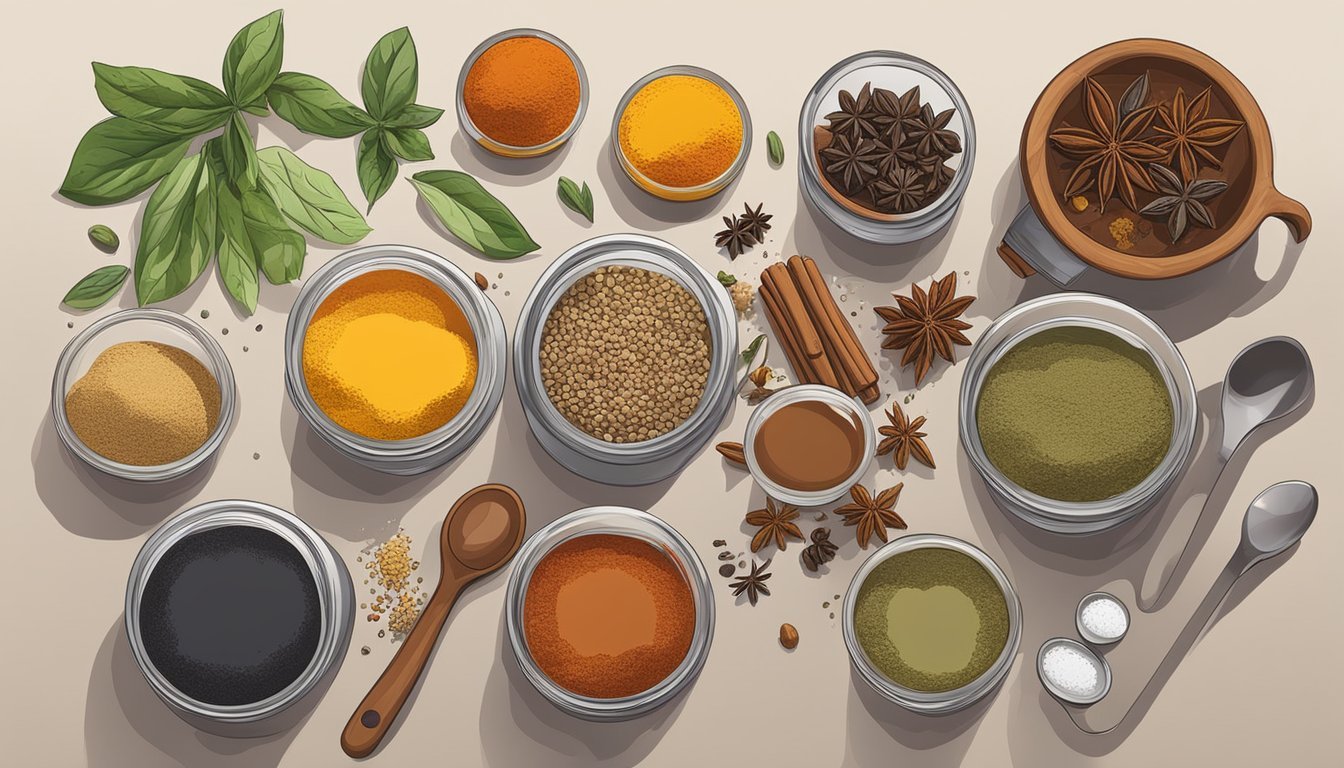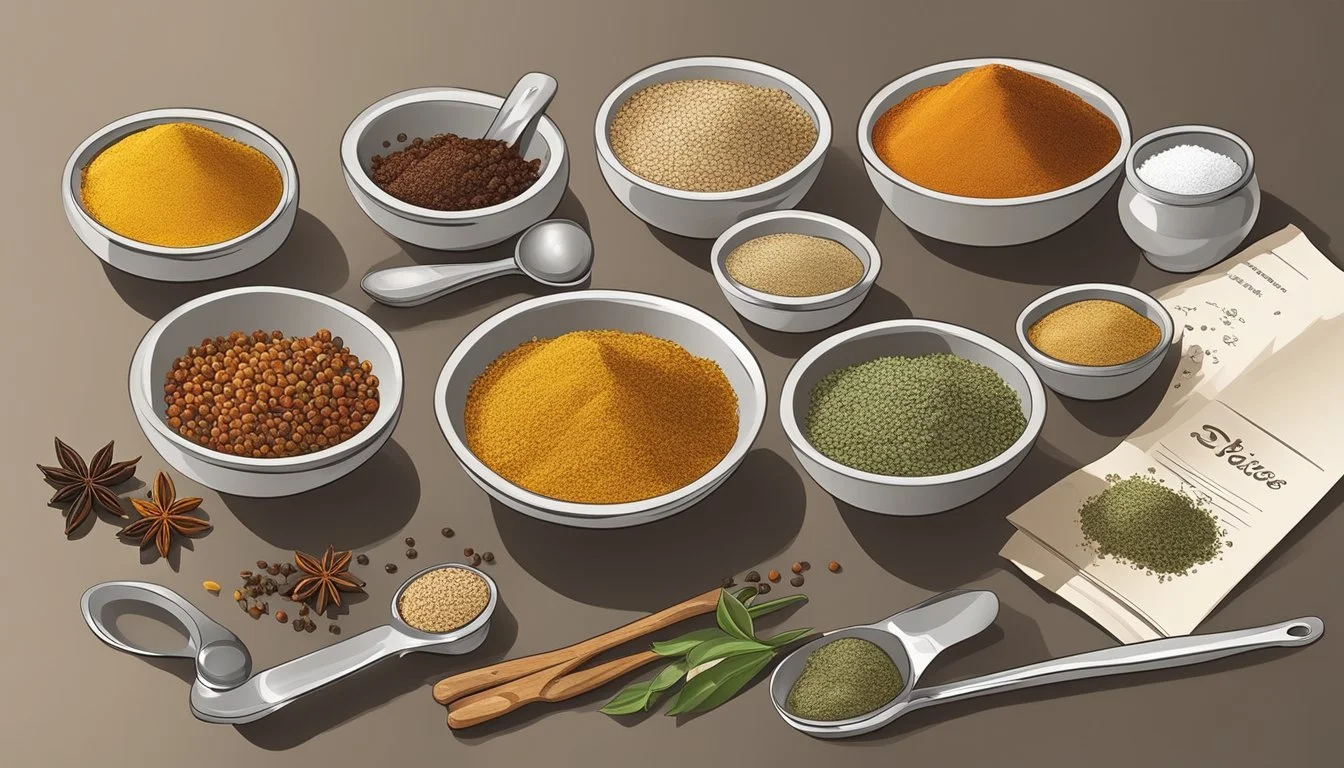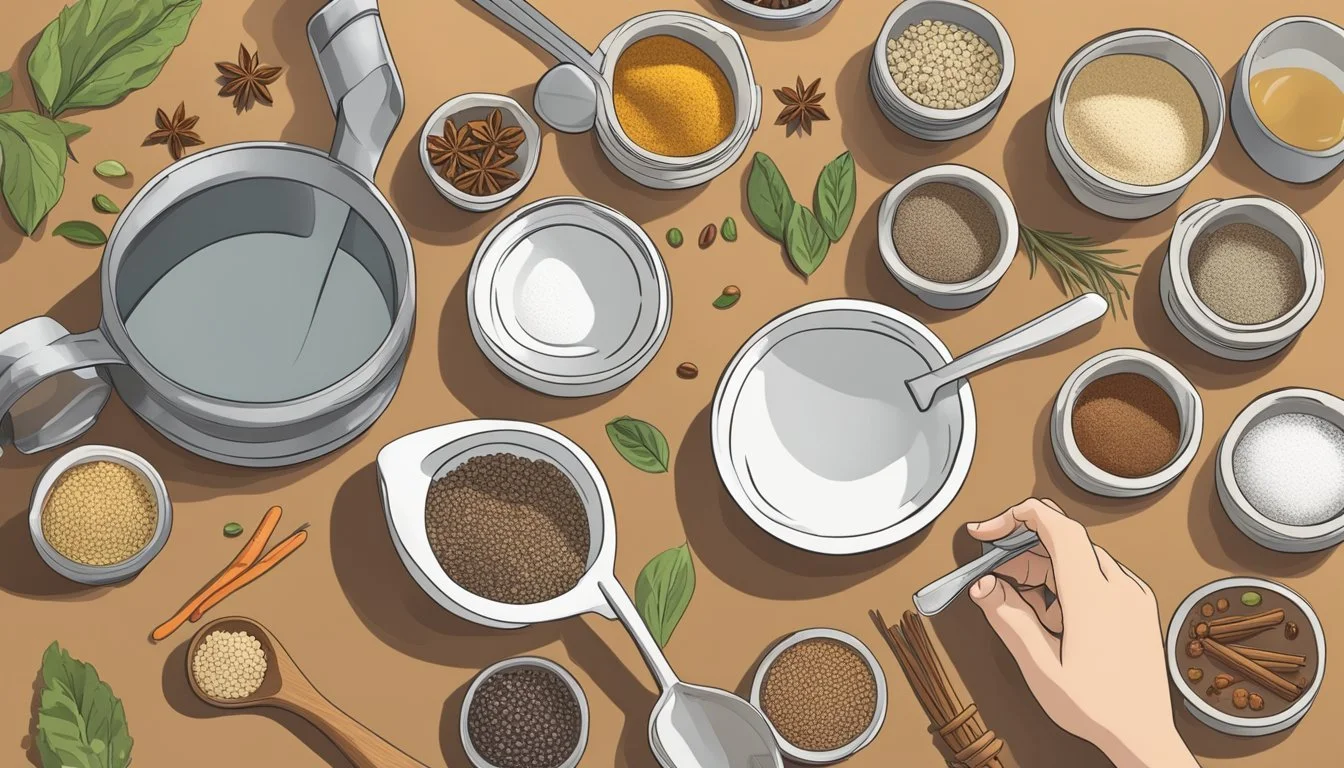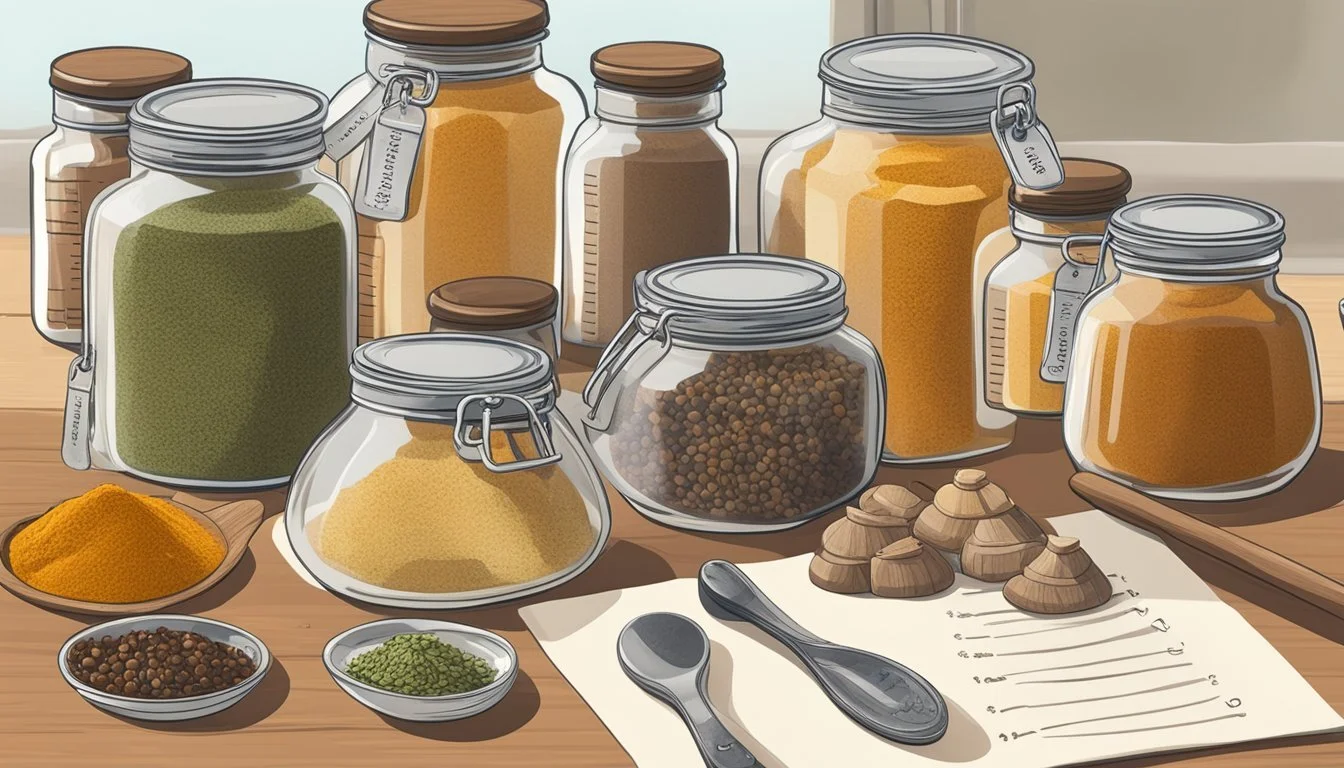How to Measure Ingredients Accurately for the Perfect Homemade Spice Blend
Crafting a homemade spice blend is both an art and a science, requiring attention to detail and a nuanced understanding of flavors. Combining the right quantities and varieties of spices can elevate the taste of any dish, offering a signature flavor that sets home cooking apart from the rest. Homemade spice blends not only provide rich flavor but also allow for customization to personal taste preferences, ensuring every meal can be as bold or as subtle as desired.
Precise measurement is crucial in the creation of these blends to maintain consistency and balance. Each spice's unique potency must be considered when measuring, as the strength of their flavors can vary significantly. The careful measuring of ingredients ensures each batch of homemade spice blend is harmonious, without any single flavor overpowering the others.
Using standard measuring spoons for small quantities and kitchen scales for larger batches helps achieve accuracy. This accuracy is not only important for taste but also for replicating the same blend in the future. A well-measured spice blend can become a kitchen staple, a go-to mixture that reliably enhances a wide variety of meals with its well-rounded and carefully curated flavor profile.
Understanding Spices and Herbs
When creating a homemade spice blend, the selection and combination of spices and herbs are pivotal for achieving the desired flavor profile. They must be measured and used thoughtfully to ensure a well-balanced and aromatic mix.
Types of Spices and Herbs
Spices and herbs come from various parts of plants. Spices are typically obtained from seeds, berries, bark, or roots, while herbs usually refer to the leafy green parts. Common spices include cumin, black pepper, cayenne pepper, cinnamon, coriander, and ginger. Herbs often used are basil, oregano, sage, thyme, rosemary, dill, and parsley. Each brings its unique characteristics to a blend:
Cinnamon and fennel are noted for their warm, sweet notes.
Cumin and coriander provide earthy tones.
Cayenne pepper and black pepper introduce heat.
Garlic powder and onion powder often serve as pungent, savory bases.
Herbs like rosemary and thyme lend a piney, peppery essence, while basil and oregano are staples in Italian seasoning, contributing to a bright and aromatic quality.
Flavor Profiles
To achieve a harmonious spice blend, one should understand the flavor profiles of individual spices and herbs and how they interact:
Sweet: Cinnamon, fennel
Earthy: Cumin, coriander
Pungent: Garlic, onion
Hot: Cayenne pepper, black pepper
Herbaceous: Rosemary, thyme, basil, oregano
As a general rule, herbs like parsley and dill can add a fresh note, while rosemary, oregano, and thyme offer a robust taste. Garlic powder and paprika, varying from sweet to smoky, can round out a spice blend, with paprika providing a rich color as well. Salt is typically included for its ability to enhance other flavors within the mix.
In blending, one should consider the intensity of each component to avoid overpowering elements. For instance, a little cayenne pepper goes a long way, while ingredients like garlic powder can be used more liberally. By focusing on the balance between warm, earthy, pungent, hot, and herbaceous notes, the resulting blend can complement a variety of dishes, elevating their flavor complexity without dominating the palate.
Basic Techniques for Measuring Ingredients
Accurate measurement is key to the success of any homemade spice blend. The reader will learn the differences between measuring dry and wet ingredients and how to utilize measuring spoons and scales for precision.
Measuring Dry vs Wet Ingredients
Dry Ingredients: When measuring dry ingredients such as flour, sugar, or spices, one should use dry measuring cups. The appropriate method is to spoon the ingredient into the measuring cup until it heaps over the top. A straight edge, like the back of a knife or a metal spatula, is then used to level off the excess, ensuring a precise measurement.
Wet Ingredients: Liquid ingredients, on the other hand, require the use of a liquid measuring cup. One should place it on a stable, level surface and pour the liquid in until it reaches the desired mark. It's important to check the measurement at eye level to ensure accuracy.
Using Measuring Spoons and Scales
Measuring Spoons: For smaller quantities, measuring spoons are handy. Ingredients like curry powder or dry mustard should be scooped with the spoon and leveled off. To measure a teaspoon of an ingredient, for example, fill the spoon and level it. When combining simple ingredients such as dill weed and onion powder, this ensures consistency in every batch of your homemade spice blends.
Scale: A kitchen scale should be used for ingredients that require precise weight measurements. It is particularly useful when the total time spent on preparation needs to be efficient, ensuring consistent and accurate measurements. It's advisable to zero the scale with your container before adding the ingredient for the most precise measurement.
By using these techniques, one can measure ingredients with confidence, ensuring that their homemade spice blends have the perfect balance of flavors.
Creating Your Own Spice Blend
Crafting a homemade spice blend involves selecting quality ingredients, understanding the art of balancing flavors, and adequately mixing and grinding to achieve the desired texture. Here's how to approach the process step by step.
Choosing Your Ingredients
When they decide to create their own spice mix, the selection of ingredients is pivotal. They should aim for fresh, whole spices which can offer superior flavor and potency. A successful homemade seasoning often combines savory elements such as garlic powder and onion powder with unique spices that add an earthy or sweet note, depending on the desired outcome. For example:
Savory: garlic powder, onion powder, dried mustard
Sweet: cinnamon, nutmeg, allspice
Earthy: cumin, turmeric, cardamom
Proportion and Balance
Achieving the right proportion and balance is essential when one is making a spice mix. They should start with a base spice that will dominate the blend and then add smaller amounts of complementary spices to enhance the complexity and depth. Here's a simple structure they can follow:
Base spice: 1 tablespoon (e.g., chili powder for a taco blend)
Secondary spices: 2 teaspoons each (e.g., cumin, smoked paprika)
Accent spices: 1/2 teaspoon or less (e.g., black pepper, cayenne)
Mixing and Grinding Spices
Once they have their spices portioned, it's time to mix and grind. They can simply combine the spices in a mixing bowl using a whisk to ensure an even distribution. For a finer texture, they should use a spice grinder or a coffee grinder. Grinding spices not only melds flavors but also creates a finer texture that can easily be incorporated into dishes. The key is to stop grinding once they've reached the right consistency, to avoid turning the spice mix into a paste.
Storage and Preservation
Proper storage and preservation are crucial for extending the shelf life and maintaining the flavor integrity of homemade spice blends. Choosing the right containers and understanding how to keep these pantry staples fresh are key steps to ensure that the spice blends remain potent and ready for use.
Ideal Containers
For homemade spice blends, it's essential to use airtight containers. These containers prevent moisture, air, and contaminants from compromising the quality of the spices. Options include:
Glass jars with tight-fitting lids
Metal tins with secure closures
Plastic containers with airtight seals
Using clear containers can make identifying contents easy, but storing these in a dark place like a cupboard will shield them from light, which can lead to flavor deterioration.
Maintaining Freshness
To retain the freshness of spice blends, some precautions are necessary:
Location: Store containers in a cool, dry place, away from heat sources. A pantry or cupboard that is away from the stove or oven is ideal.
Temperature: Consistent and moderate temperatures help prevent the spices from losing their potency.
Light: Direct sunlight can degrade the quality of spices. If the containers are stored in a light-exposed area, opaque or tinted containers are recommended.
Usage: When using spices, it's advisable to measure them out with a dry spoon to avoid introducing moisture into the container.
Maintain your spices' peak condition by following these straightforward but effective storage guidelines.
Cooking with Homemade Spice Blends
Homemade spice blends elevate the flavor profiles of a wide variety of dishes. By mixing your own spices, you can adjust the taste to your preference and ensure freshness in every spoonful.
Common Uses in Cooking
Meats, Poultry, and Fish: Apply dry rubs such as blackened seasoning, jerk seasoning, or homemade steak seasoning to meats before grilling or roasting to infuse them with robust flavors.
Vegetables: Toss vegetables with olive oil and season with your preferred homemade spice blend, like ranch seasoning or herbes de Provence, before roasting for a delicious side dish.
Soups and Stews: Stir in garam masala, homemade chili seasoning, or Creole seasoning to enhance the depth and warmth of soups and stews.
Dish Type Suggested Spice Blend Poultry Poultry seasoning, fajita seasoning Burgers DIY burger seasoning Rice Taco seasoning, garam masala Stews Homemade chili seasoning, Creole seasoning Roast Herbes de Provence, roast seasoning
Adjusting Flavors to Your Dish
Intensity: Start with a small amount of seasoning mix and add gradually, tasting as you go.
Balance: Consider the other ingredients in your dish. A rich, creamy soup might benefit from a bolder spice mix like taco seasoning, while delicate fish might be better suited to a lighter mix like dill or lemon pepper.
Specificity: For tailored applications, create and label mixes such as poultry seasoning, fish seasoning, or vegetable blends to streamline the cooking process.
By keeping these practices in mind, you'll ensure your homemade spice blends contribute just the right touch to your culinary creations.
Advanced Spice Blend Concepts
In the art of spice blend creation, mastering the balance of flavors is crucial. Successful blends are shaped by a symphony of ingredients that, when measured accurately, contribute to a distinct and memorable culinary experience.
Creating Signature Blends
A signature spice blend embodies uniqueness and personal taste. It is often a combination of simple ingredients that harmonize to create a specific, complex flavor profile. To construct a signature blend, one begins by selecting a base flavor, such as the warmth of cumin or the earthiness of sage. Then, complementary spices are added to enhance and balance the base. For instance, oregano and rosemary might provide aromatic top notes, while ginger can add a spicy kick. Precision in measurement is paramount—too much of a single component can overpower the blend. Utilizing a digital scale for measurements can ensure that each ingredient is portioned accurately to maintain consistency in taste.
Example Basic Formula for a Signature Blend:
Base: 2 parts cumin
Supporting Spices: 1 part sage, 1 part rosemary
Accent: 1/2 part ginger, 1/2 part dill
Cultural and Regional Influences
One cannot overlook the impact of cultural and regional practices on spice blends. Each region's unique blend, like the French herbes de Provence or Middle Eastern Za'atar, is reflective of its culinary traditions. When creating a regionally inspired blend, research and respect for traditional ratios are crucial. For example, herbes de Provence typically highlights sage, oregano, and rosemary, among other herbs, with each measured to maintain the quintessential hearty and light flavor synonymous with the French countryside.
Common Regional Blend Components:
Herbes de Provence: Sage, Oregano, Rosemary
Latin America: Cumin, Parsley, Oregano
Asia: Ginger, Dill, Cumin
Experimentation within these frameworks can yield results that honor traditional flavors while providing a unique twist that distinguishes a blend as your own.
Additional Tips and Resources
When creating homemade spice blends, a cook must consider the scalability of the recipe and the nutritional implications of the ingredients to ensure not just flavor but also health consciousness.
Scaling Recipes for Larger Batches
Scaling a recipe accurately for larger batches requires the use of a kitchen scale for precise measurements. A simple rule is to multiply the quantities of each ingredient by the same factor. For example, if a blend calls for 1 teaspoon of paprika and it needs to be doubled, they would use 2 teaspoons. They should also consider the total time commitment to making larger quantities and ensure that they have adequate storage for the finished product. When scaling, it's essential to maintain the balance of flavors; hence, some ingredients like MSG or potent herbs may need to be adjusted slightly to prevent overpowering the blend.
Nutritional Considerations
Homemade seasoning blends provide control over nutritional content, allowing a person to limit calories, sodium, and additives found in commercial mixes. They should take note of herbs and spices known for their health benefits and incorporate them into their seasoning mixes. For example, using dried herbs instead of fresh can intensify flavors without adding extra calories. Moreover, choosing to grind spices with a mortar and pestle or a spice grinder just before blending can ensure freshness and retain the health benefits often lost in pre-ground spices. If someone is sensitive to MSG or other additives, making spice blends at home is an easy-to-make alternative that allows for complete exclusion of such ingredients.
Innovations in Spice Blends
The landscape of spice blends is ever-evolving, with culinary innovators constantly seeking out novel taste profiles and unique ingredients to elevate the depth and complexity of flavors in everything from traditional dishes to cutting-edge sauces, marinades, and dips.
Exploring New Flavor Combinations
In the realm of spice blends, the deliberate pairing of spices to create new, innovative flavor profiles is a burgeoning trend. Chefs are combing through culinary traditions from around the world to identify spices that, when combined, can transform a dish's taste. For example, the emergence of blends that incorporate warm spices like cardamom with earthy notes from cumin and bright, citrus-like sumac creates a multifaceted flavor suitable for both meat marinades and vegetarian dips.
Common Innovative Pairings:
Sweet & Savory: Cinnamon coupled with smoked paprika
Bright & Earthy: Lemongrass merged with turmeric
Warm & Spicy: Nutmeg infused with chili flakes
Utilizing Uncommon Ingredients
There's also a surge in the inclusion of lesser-known or previously underutilized ingredients into spice blends to offer a unique edge. Ingredients like grains of paradise, long pepper, or dried sumac berries are gaining prominence for their ability to introduce an unexpected twist to familiar flavors. These ingredients not only contribute to the taste of the blend but also often add to the visual appeal and texture, making the spices and the final dish more enticing.
Examples of Uncommon Ingredients:
Grains of Paradise: Adds a peppery zest with hints of cardamom
Long Pepper: Delivers a complex spicy-sweet profile
Sumac Berries: Impart a tangy lemon flavor
Through these novel combinations and ingredient incorporations, spice blends are achieving new heights in culinary innovation, offering chefs and home cooks alike the opportunity to experiment and discover new dimensions in their cooking.
Conclusion
When crafting a homemade seasoning blend, precision and careful measurement are fundamental factors to achieve the desired flavor. Seasoning blends, made from simple ingredients, can significantly elevate the taste of any dish, transforming the ordinary to exceptional.
To ensure your spice blends offer a consistent and savory experience, it’s vital to use measuring spoons for all ingredients. This helps control not just the flavor but also the calories, for those who are mindful of their intake. A kitchen scale can further enhance accuracy, especially when dealing with larger quantities.
Here’s a quick checklist to ensure perfect measurements:
Use the right tools: Measuring spoons and a scale for precision.
Level off: After scooping, use a knife's flat edge to remove excess.
Store correctly: Keep blends in airtight containers to preserve freshness.
Every homemade spice blend is unique, and the process of measuring their components should reflect that uniqueness. Remember to always taste and adjust; your palate is the ultimate guide.
Lastly, keep the process simple — meticulous preparation leads to the best flavor profiles, turning your homemade blends into something truly special for any dish.











